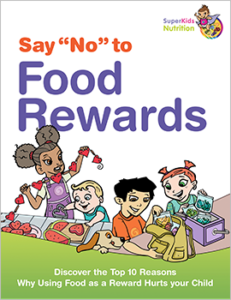
When it comes to dietary fats, not all fats are created equal. Trans fat has recently been identified as the most harmful of all dietary fats, and for good reason.
Before we dissect trans fats, it’s important to understand how it fits into the bigger picture.
Is all fat created equal?
Fat is an important component of a healthy diet, but the type of fat your family consumes makes a big difference. The majority of the fat you consume should be from the heart-healthy unsaturated fats, with a limit amount of saturated and trans fats. (1) This is how they differ:
- Unsaturated fats are found in plant sources, such as nuts, seeds, olives, many nut or seed oils, avocados, and fatty fish.
- Saturated fats are generally solid at room temperature and are typically found in animal products such as cheese, beef, milk, ice cream, and butter. Coconut oil and palm kernel oil also contain high amounts of saturated fats.
- Trans fats are naturally present in very small amounts in certain animal products, such as meat, whole milk, and other milk products. However, vegetable oils can be transformed through the process of hydrogenation to contain trans fats. These hydrogenated oils are used in some processed foods and are added for their texture, flavor, and shelf life-enhancing properties. (1)
How much trans fat is too much?
The 2015-2020 Dietary Guidelines for Americans recommends limiting the intake of trans fats to as little as possible. (2) This recommendation is a result of the strong body of research showing the health risks associated with trans fat intake. Many studies have found that trans fat intake is linked to increased LDL cholesterol (also called the ‘bad’ cholesterol), and decreased HDL cholesterol (or the ‘good’ cholesterol). This impact on cholesterol levels can increase anyone’s risk of developing heart disease and type 2 diabetes and can also increase the chances of having a stroke. (1)
Steps to take to limit your family’s trans fat intake.
In June 2015, the FDA regarded trans fats as unsafe in food. However, the final compliance date for the total removal of artificial trans fats from food will not occur until 2021. While many fast food restaurants and food manufacturing companies have taken steps to decrease the trans fat present in their products, some trans fats can still be found on grocery store shelves and in restaurant menu items. As a consumer, here is how you can detect and avoid trans fat. (2)
Read food labels!
Look for foods with 0 grams of trans fats on the Nutrition Facts Panel. Be aware that by law, manufacturers are allowed to claim a product contains 0 grams of trans fat if it has less than 0.5 grams per serving. Even if a product boasts 0 grams trans fat, it might actually contain 0.3 or 0.4 grams per serving. This can add up rather quickly, which is why reading the ingredient list is important.
Read the ingredients list.
If you see partially hydrogenated or hydrogenated oil or shortening listed, that means the product contains some trans fat.
Learn which foods are likely to contain trans fats.
These include packaged desserts, microwaveable popcorn, margarine, coffee creamers, and frozen pizzas.
Trans fat-free does not always mean it’s a healthful choice.
Aim to follow an eating pattern that emphasizes vegetables, fruit, whole grains, beans, low-fat dairy products, and lean proteins, and minimizes added fats and sugars. Learn more about what a healthy plate looks like.












